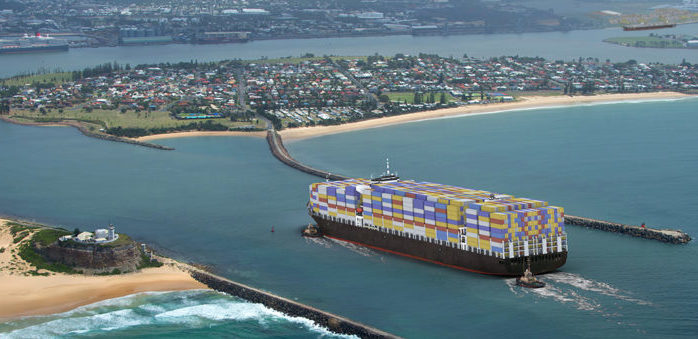BIMCO released some of its reflections regarding the growth of global shipping. Namely, BIMCO said that developing countries will play a key role in the next five years, something that will affect shipping as well.
Analyzing BIMCO’s reflections, Peter Sand, Chief Shipping Analyst at BIMCO, said that according to IMF developing countries will play an important role. What is more, advanced economies’ growth is decreasing and has been so since the mid-2000s.
[smlsubform prepend=”GET THE SAFETY4SEA IN YOUR INBOX!” showname=false emailtxt=”” emailholder=”Enter your email address” showsubmit=true submittxt=”Submit” jsthanks=false thankyou=”Thank you for subscribing to our mailing list”]
This will impact every shipping sector. Namely, according to BIMCO, dry bulk demand is supported, while container shipping will experience more pressure in its demand growth rates. As for oil tankers, they will be bittersweet, as demand in the East may be affected by a contraction in the West. As far as the corridors are concerned, the trade war is impacting the entire shipping industry.
Dry bulk market
Mr. Sand expects a change in interest from imported iron ore towards scrap metal. 2018 is a turning point in this matter, as Chinese seaborne imports are fewer year on year for the first 10 months of 2018.
Moreover, the Handymax and Panamax sectors have uncertainty due to the trade war between the US and China.
Regarding agri bulks, they ‘have taken centre stage in 2018, and US soya bean exports star in a leading role’.
Oil tankers
2018 was a terrible year, BIMCO notes, as crude-oil tanker operators have been particularly hard hit. 2019 will also be a difficult year for the crude-oil shipping sector.
A four-year, low fleet growth in 2018 protected some of the reduction of a weak demand side, but the result of years with a fleet growth of 5-6% was too heavy.
Additionally, BIMCO believes the demolition activity seen in 2018 will not be repeated in 2019. Namely, earnings could improve from the lows of 2018 leading owners to lose interest in selling ships for scrap. As for fleet growth, it is expected to be over 2%. However, don’t bet the farm that this will happen.
For oil-product tankers the outlook is more positive. Low fleet growth has prepared the market for improved earnings in 2019. One of the potential positive development in 2019 would be the distribution of IMO 2020-compliant fuels.
Container industry
2018 was a disappointment, with a few good moments. Inbound-loaded container imports on the US east coast increased by+8%, while on the US west coast, volumes did not impress; however, spot freight rates achieved a five-year high in October for the Shanghai to USWC trade lane.
As for the disappointments, this was the development of fleet growth, with demolition hitting a 10-year low. This led fleet growth to rise higher than demand.
For 2019 BIMCO expects fleet growth to be pivotal.
If only judged by new-builds, it’s clearly positive, but remember, 700,000 TEU are idle in today’s market. If the lion’s share of that is reactivated – which it will be as soon freight rates just go up slightly – expectations may be reversed
Furthermore, volume growth on long-distance trades will be vital, as fleet growth will emphasize on how to fit into them. Intra-Asian trades will also suffer if the front-haul, transpacific cargo flow stays protected because of tariff walls on the Pacific.

































































